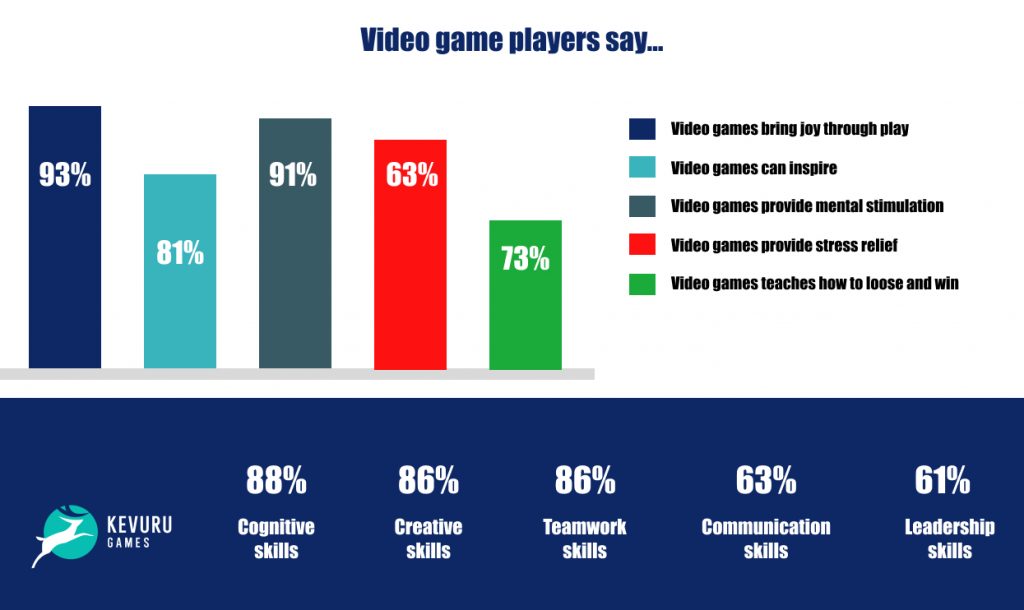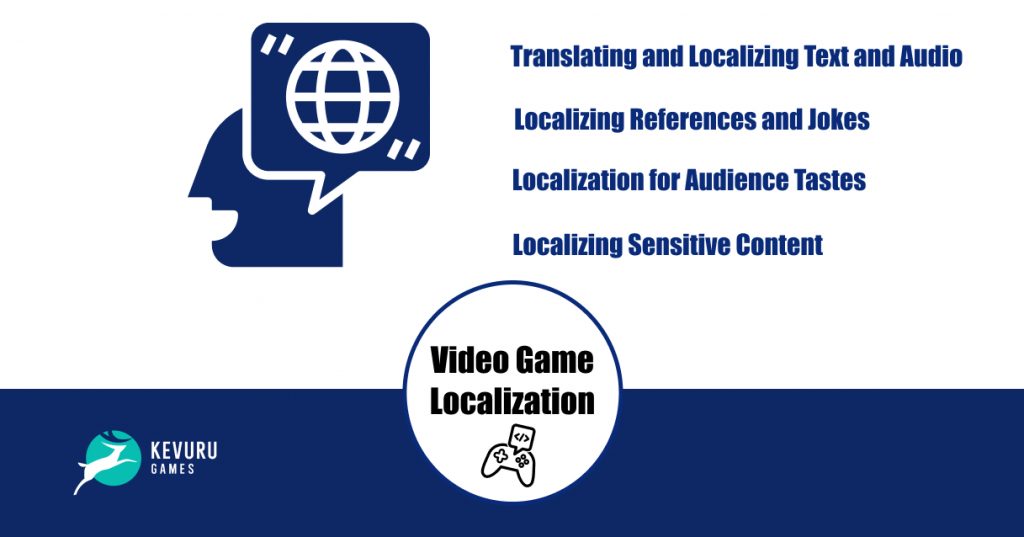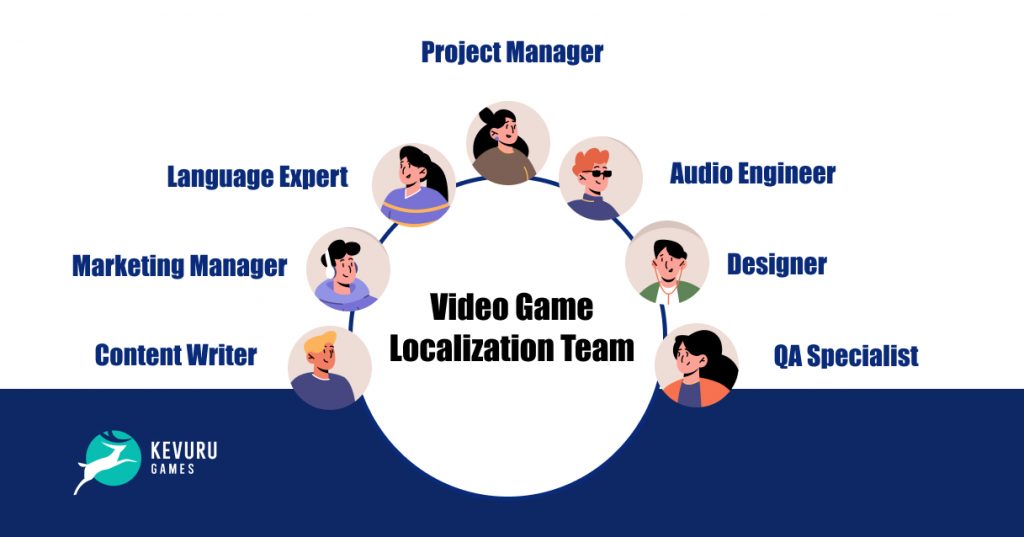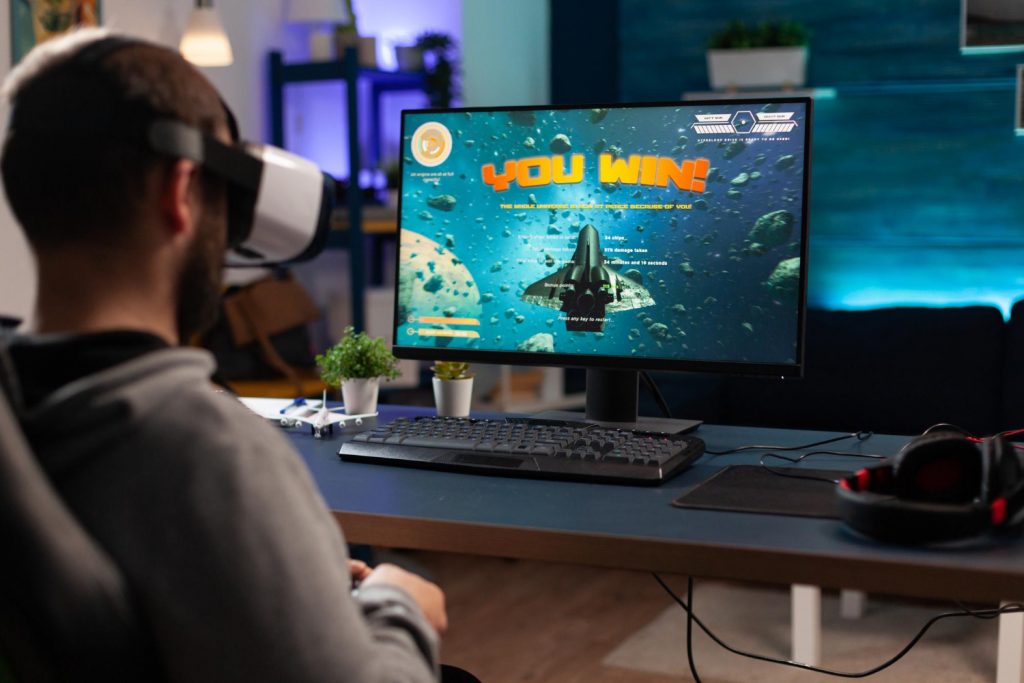In today’s globalized world, the popularity of video games has skyrocketed. And with it, the need for video game localization became a necessity. Video game localization is about adapting a video game’s content and text to suit players’ preferences and cultural nuances from different world regions. Why does video game localization matter? Let’s learn about best practices for creating an engaging experience for international players.

What Is Video Game Localization?
It refers to adapting and translating video game content to meet players’ linguistic and cultural preferences in different target markets. It involves the translation process alone and adapting graphics. As well as voice output, user interfaces, and game elements to ensure the game appeals to the target audience.
Localization plays a crucial role in a game’s success in international markets. By providing a localized game version, developers can remove language barriers, connect with players on a deeper level, and increase their chances of commercial success.
While video gaming localization is essential, it also presents some challenges. One of the biggest hurdles for localization teams is the complexity of game content. Games often contain complex narratives, cultural allusions, humor, and puns. This is difficult to translate while maintaining the original meaning and impact.
Also, the technical aspect of the game localization kit presents another challenge. Developers should adopt game files to different languages, character encodings, and text extensions or abbreviations. As specific languages require more or fewer characters to express the same concept.

What Is Involved in Video Game Localization?
Video game localization enhances the gaming experience. It makes games more accessible and engaging for different audiences. When players can understand and engage with a game in their native language, an emotional connection allows them to understand the game’s story, characters, and gameplay mechanics.
Localization also demonstrates respect for cultural differences. It also promotes inclusion and diversity within the gaming community. By adapting content to local customs, idioms, and references, game developers create an authentic experience. It appeals to players culturally, resulting in greater player satisfaction and engagement.
Translating and Localizing Text and Audio
Translating a game’s text is more than transferring words from one language to another, avoiding grammatical errors. It requires a deep understanding of the game’s context, narrative, and cultural nuances. Experienced translators capture the essence of the original dialogue. They ensure that jokes, puns, and cultural references are adapted to resonate with players in the target language. The goal is to preserve the spirit and emotional impact of the original. While creating an authentic experience for players from different language backgrounds.
Localization involves translating the text into multiple languages and tailoring it to specific regions or countries. This process involves adapting the content to cultural preferences, social norms, and legal requirements. Localization experts analyze the game text and make adjustments to adapt it. Translators must capture the essence of the original text while adapting it to the cultural context of the target audience. This includes adapting idioms, metaphors, and colloquial expressions to better resonate with the actors.
Audio localization involves adapting the voice output, sound effects, and music to different languages. Thus, casting qualified voice actors fluent in the target language is critical to maintaining authenticity. Also, the localization teams work with the voice actors to ensure proper pronunciation, intonation, and emotional delivery.
Localizing References and Jokes
Video games often reference pop culture, historical events, or particular regional humor. These references and jokes can enhance the gaming experience by creating a sense of familiarity. But, when localizing a game, it is critical to adapt these allusions appropriately to ensure they make sense to the target audience.
Translators and localizers must understand the cultural allusions and find appropriate alternatives that resonate with players. This ensures that players from different regions can enjoy the humor and allusions of the game without feeling alienated or confused.
Localizing Sensitive Content
Video games sometimes contain sensitive content, such as violence, explicit language, or mature themes. Modify it during localization to comply with local regulations and avoid potential controversy. This process requires a delicate balance between preserving the game’s original intent and respecting the target audience’s cultural sensitivities.
Localization for Audience Tastes
Different regions have different preferences and tastes when it comes to video games. It can include changing the game mechanics, adjusting the difficulty level, or even incorporating region-specific features. For example, a game localized for the Korean market might consist of content or characters that match the preferences of Korean players.
4 Steps to Effective Game Localization
Bringing a video game to a global audience requires more than just a simple translation. It demands meticulous planning, attention to detail, and a deep understanding of the target market. Effective game localization follows a systematic approach to ensure a seamless and immersive experience for players worldwide.
1. Familiarization
That’s the first crucial step in game localizer. It involves immersing oneself in the game’s world, story, characters, and gameplay mechanics. Next, the localization team must thoroughly understand the game’s context, themes, and intricacies. By familiarizing themselves with the game, translators gain insights into the nuances of the original content. This understanding allows them to adapt the text and dialogue.
2. Translation Memory Automation
Translation memory automation is a valuable tool in game localization that improves efficiency and consistency. Translation memory software stores previously translated segments, such as phrases or sentences, and suggests these translations when similar or identical segments appear in the game.
This automation ensures consistency across the game’s content. It also speeds up the localization process by reducing the time spent on repetitive tasks.
3. Proofreading
Proofreading is essential to maintaining the localized game’s quality and accuracy. After the initial translation, a dedicated proofreader reviews the text for errors, inconsistencies, and adherence to the target language’s grammar and style. Besides, the proofreader ensures that the translated text captures the original content’s intended meaning, tone, and emotions.
4. Quality Assurance
It’s the final step in delivering players a seamless and enjoyable experience. QA involves rigorous testing of the localized game to identify and rectify any linguistic, functional, or technical issues.
Linguistic QA ensures that the translated text fits within the designated space, is free from grammatical errors, and reads naturally.
Functional QA focuses on verifying the functionality of localized features, menus, subtitles, and user interfaces.
Technical QA involves testing for compatibility, audio synchronization, and any potential bugs that may arise during the localization process.
QA ensures that the localized game meets the highest quality standards. And resulting in a polished and immersive gameplay experience for players worldwide.
The Popularity of Video Games Around The World
In recent years, video games have experienced a tremendous surge in popularity. They are crossing geographic boundaries and captivating audiences of all ages and backgrounds. What was once considered niche entertainment has become a global phenomenon. There are over 3 million gamers immersed in virtual worlds daily.

Entertaining Gameplay
One of the primary reasons for the immense popularity of video games is their interactive and engaging nature. Unlike passive forms of entertainment, such as movies or television shows, video games allow players to participate in the experience actively. Whether it’s solving puzzles, exploring vast landscapes, or engaging in thrilling battles, you will get an unprecedented level of interactivity that captivates you.
Diverse and Immersive Game Worlds
A prominent virtue intrinsic to video games lies in exploration and their unparalleled freedom of movement. You may find yourself enchanted by the immersive wonders of Star Wars or Fortnite. Moreover, an intriguing genre emerges within the vast tapestry of contemporary gaming: open–world games. These crafted creations grant players the extraordinary privilege of delving into the heart of a game’s universe, embracing its infinite possibilities. A noteworthy example is the Skyrim, Iron Blade, and Wild Blood games series.
Multiplayer and Online Connectivity
The rise of multiplayer and online gaming has revolutionized how people play and interact with video games. The ability to connect with friends, family, and even strangers from across the globe has fostered a sense of community.
Inclusive and Diverse Content
Video game developers have recognized the importance of creating inclusive and diverse content. And it resonates with a wide range of players. As a result, games now feature a more varied cast of characters representing different genders, ethnicities, and backgrounds. This inclusivity allows players to see themselves reflected in their games. As a result, fostering a sense of representation and belonging within the gaming community.
Esports Scene
The rise of competitive esports has propelled video games into the mainstream. Professional gamers compete in high-stakes tournaments, showcasing their skills and entertaining millions of spectators. The esports scene has not only elevated the status of video games but has also inspired a new generation of aspiring players who dream of competing on the global stage.
Business Benefits of Video Game Localization
Video game localizer solutions offer compelling business benefits. And they can significantly impact your success in new markets. By generating more downloads, you increase the quality of your reviews, build new fan bases, successfully launch your product, and conquer new markets. Localization is the key to unlocking new growth opportunities and maximizing your game’s potential. By making localization an integral part of your business strategy, you can increase player engagement, revenue growth, and long-term success in the global games industry.
1. Generate more downloads
Video game localization opens the doors to a wider audience and allows you to reach players who are not fluent in the original language of the game. By translating and localizing your game’s text, audio, and user interface, you can make it more accessible and appealing to players from different regions.
2. More high-quality reviews
When players feel connected to a game, they are more likely to leave positive ratings and reviews. When you invest in video game localization, you show your commitment to providing players with an exceptional experience in their native language. As a result, you can expect to receive more high-quality reviews and ratings, which will boost your game’s reputation and attract even more players.
3. Build new fan bases
Localization allows you to build new fan bases in different markets. You can make connections and build a loyal fan base by adapting your game’s content, humor, and innuendo to resonate with players from different cultures. Building a solid fan base in different regions increases the popularity of your game and opens up opportunities for community engagement, brand loyalty, and potential monetization opportunities.
4. Launch with impact
Launching a game with a well-thought-out localization strategy can impact the game’s success. Simultaneous global launches or strategically staggered releases in different regions can build excitement and anticipation among gamers worldwide. Ensuring your game is fully localized and ready for release in multiple languages can make a solid and memorable impression, attract media attention, and increase the chances of a successful debut.
5. Tap into new markets
Video game localization is a powerful tool for opening up a new market. By adapting your game to specific regions’ preferences and cultural characteristics, you can overcome language barriers and cater to players’ unique expectations. This paves the way for a successful market entry. It also allows you to tap into previously untapped markets and exploit their potential for revenue growth.
How to choose a team for localization
Choosing a quality game localization team ensures a successful and high-quality localization process. We advise you on how to select the right team and what criteria to consider when localizing games:
1. Expertise and experience
Look for professionals who specialize in video game localization. Or look for freelancers or agencies with a proven track record for different genres and platforms. Check their experience working with different languages, cultural adaptations, and technical aspects of game localization.
2. Language skills
Language skills are a fundamental need for a localization team. Ensure that team members are native or near-native speakers of both the source language (the game’s original language) and the target languages.
3. Cultural knowledge and adaptability
The team should have a thorough understanding of the target markets, including cultural norms, preferences, and sensitivities. Look for professionals who can adapt content, humor, and references to resonate with players from different cultural backgrounds.
4. Technical skills and tools
Localization involves working with game engines, file formats, and integration processes. Ensure the team has the technical know-how and a solid understanding of the technical requirements of game localization.
5. Collaboration and communication
Effective collaboration and communication are critical to a smooth localization process. The team should be responsive, proactive, and able to work closely with your development team. Look for professionals who value open communication, provide regular updates, and actively seek feedback.

How the Team Functions in the Game Localization Process
The game localization process involves the collaborative effort of team members working together to ensure a seamless and high-quality localization.
1. Project Manager
Serves as the central point of contact and oversees the entire localization process. This person coordinates the team, manages timelines, and ensures smooth stakeholder communication. Besides, the project manager collaborates closely with the development team, localization specialists, and other relevant parties to ensure the localization project stays on track.
2. Language Experts
Localization specialists play a crucial role in adapting the game’s content for different languages and cultures. They handle tasks such as translation, cultural adaptation, and linguistic testing. These specialists possess source and target language expertise and work closely with the development team to ensure accurate and culturally appropriate translations. They also collaborate with other team members to address technical and content-related challenges.
3. Audio Engineers
Audio engineers play a vital role in games with voice-over or audio content. They work closely with voice actors, ensuring the dialogues are recorded professionally and meet the required standards. Audio engineers also handle tasks like audio editing, synchronization, and quality control to ensure that the localized audio matches the gameplay seamlessly.
4. Quality Assurance Testers
Quality assurance (QA) testers are responsible for ensuring the quality and functionality of the localized game. They conduct comprehensive testing to identify and rectify any linguistic, functional, or cultural issues that may arise during the localization process. QA testers collaborate with the development team. They aim to provide feedback and ensure that the localized game meets the desired quality standards.
5. Content Creators
The team works with the game developers and content writers throughout the localization process. They collaborate to understand the context, intent, and vision behind the game. Regular communication, feedback loops, and iterative processes ensure that the localization team captures the essence of the game and maintains its integrity throughout the localization process.

Kevuru Games Expertise in Video Game Localisation
You should contact professional localization service providers or agencies. They will be able to assess your needs, analyze the game’s content, and provide a detailed cost breakdown. Cost estimation usually considers word count, audio recording and engineering, quality assurance testing, and project management. Working closely with localization service providers like Kevuru Games will help you better understand the costs.
Our team helps our clients consider many factors that affect the price. While the number of words in the original text and the target languages undoubtedly play a crucial role, they are only the tip of the iceberg.
Several factors must be considered when estimating the cost of localizing games. These factors include:
- the size and complexity of the game,
- the number of languages to be localized,
- the amount of text and audio content,
- the level of technical integration required,
- the specific requirements of the localization project.
At Kevuru Games we combine linguistic expertise with technical proficiency to navigate all the challenges seamlessly. Our team of experts knows their way to in-depth knowledge of localization tools, game engines, and file formats, ensuring a flawless integration of translated assets into the game.
How much does game localization cost?
Localization teams look closely at the labyrinthine nature of the game itself and evaluate its complexity and artistry. There is also the calculation of replays, which varies from agency to agency. Finally, some companies deduct 100% of the games from the total cost or offer significant discounts. In contrast, others use a comprehensive scale system that values different types of matches.
The valuation of resources is another important aspect. Seasonal variations and holidays can affect contractor availability and certain languages experience slowdowns during specific periods. For example, Chinese and Vietnamese translators take a well-deserved break during the New Year vacation, which affects the project schedule. You should also check whether working in a particular language combination is possible. For example, translating from English into lesser-known languages such as Maltese-Icelandic is a significant challenge, as specialized game translators with extensive localization experience are a rarity.
Volume discounts may come into play, as some companies offer pricing incentives for larger projects. These considerations drive localization pricing and ensure a comprehensive and customized approach for each project.
Some agencies may charge additional fees for a project manager to oversee the localization process beyond the translators. In addition, inquire about possible minimum order amounts and clarify responsibility for bank commissions on money transfers.
Let us turn to the time frame for a moment. The duration of a localization project depends on the amount of text and the number of translators assigned to the project. When a large volume of text requires rapid completion or exceeds the capacity of a single translator within a reasonable time frame, multiple linguists can contribute their expertise. While a translator typically maintains a comfortable pace of about 2,000 words daily, a few additional days are allotted for thorough error checking.
Another important step is thoroughly testing the localized version of the game. At this stage, the game undergoes a thorough review to find technical, graphical, and localization errors that could affect the gameplay experience. While the translators have explored the game themselves, their main focus is on meeting translation deadlines, which makes it impossible for them to experience all facets of the game. Often, certain passages elude translation, or sentences are hidden in images, leaving players with incomprehensible text fragments.
Fix these issues to avoid blocking games on App Store and Google Play platforms. Unfortunately, without the participation of native speakers of the target language as testers, it is impossible to detect and correct these subtle nuances.
The cost of testing depends on the hours required to conduct a thorough review and the time invested in generating bug reports and implementing necessary corrections. Testers can rely on being equipped with test scripts and cheat codes. It helps quickly navigate the game and avoid unnecessary delays due to bugs.
Conclusion
Harnessing the potential of video game sound design is crucial for creating an immersive and captivating gaming experience. From the carefully composed music to the intricate sound effects, every aspect of sound design contributes to the overall atmosphere and gameplay. Developers can enhance player engagement by optimizing video game sound design and creating a truly unforgettable experience.










